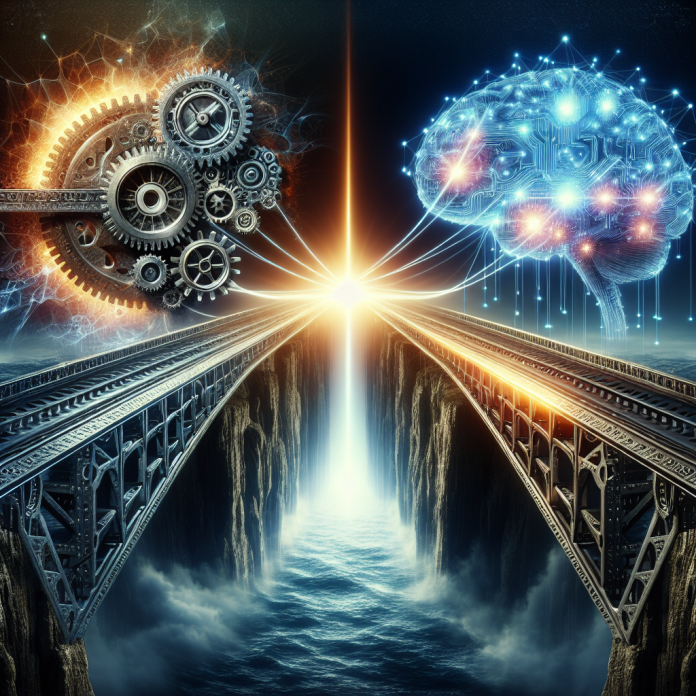Artificial intelligence (AI) and robotics are two cutting-edge technologies that have captured the imagination of the world. Both fields have made significant advancements in recent years, and their synergistic relationship is creating exciting opportunities for innovation and progress. In this article, we will explore how AI and robotics are working together to revolutionize industries, improve human life, and shape the future.
## The Rise of AI:
Artificial intelligence is the intelligence demonstrated by machines, in contrast to the natural intelligence displayed by humans and animals. AI encompasses a range of technologies, including machine learning, neural networks, and natural language processing. These systems are designed to perform tasks that typically require human intelligence, such as speech recognition, visual perception, and decision-making.
## The Evolution of Robotics:
Robotics, on the other hand, involve the design, construction, operation, and application of robots. Robots are machines that can perform a variety of tasks autonomously or with minimal human intervention. From industrial robots used on production lines to humanoid robots that can interact with humans, the field of robotics has advanced rapidly in recent years.
## The Synergistic Relationship:
AI and robotics are often thought of as separate fields, but they are increasingly intertwined. AI is powering the intelligence of robots, enabling them to perceive and interact with the world in more sophisticated ways. Robotics, in turn, are providing a physical embodiment for AI systems, allowing them to interact with the environment and perform tasks in the physical world.
## Real-life Examples:
One of the most prominent examples of AI and robotics working together is in the field of autonomous vehicles. Companies like Tesla, Waymo, and Uber are developing self-driving cars that rely on AI algorithms to navigate roads and make real-time decisions. These vehicles use sensors, cameras, and Lidar to perceive their surroundings, while AI systems process this data to make driving decisions.
## Healthcare Applications:
In the healthcare sector, AI-powered robots are being used to assist doctors and nurses in surgery, patient care, and rehabilitation. Surgical robots like the Da Vinci system can perform complex procedures with greater precision and dexterity than human hands. AI algorithms can also analyze medical images and patient data to assist in diagnosis and treatment planning.
## Manufacturing and Industry:
In manufacturing and industry, robots are being equipped with AI to improve efficiency and flexibility. Collaborative robots, or cobots, work alongside human workers to perform tasks that are repetitive or dangerous. These robots can learn from their human counterparts and adapt to changing conditions, making production lines more agile and responsive.
## Smart Home Devices:
In everyday life, AI-powered robots are becoming more common in the form of smart home devices. Virtual assistants like Amazon Alexa and Google Assistant use AI to understand and respond to voice commands, while robotic vacuum cleaners and lawnmowers can autonomously navigate and clean indoor and outdoor spaces. These devices are transforming the way we interact with our homes and surroundings.
## Ethical and Social Implications:
As AI and robotics become more integrated into society, there are important ethical and social implications to consider. Concerns about privacy, security, job displacement, and bias in AI algorithms have sparked debates about regulation and oversight. It is crucial to ensure that these technologies are developed and used responsibly to benefit society as a whole.
## The Future of AI and Robotics:
Looking ahead, the future of AI and robotics is full of possibilities. As AI algorithms become more sophisticated and robotics technology advances, we can expect to see even more innovative applications in healthcare, transportation, agriculture, and beyond. Whether it’s autonomous drones delivering packages, robotic exoskeletons enabling mobility-impaired individuals, or AI-powered assistants helping us in our daily lives, the potential for AI and robotics to improve human life is immense.
## Conclusion:
In conclusion, the relationship between AI and robotics is a synergistic one that is shaping the future of technology and society. By combining AI’s intelligence with robotics’ physical capabilities, we can create systems that are capable of performing complex tasks and solving real-world problems. As we continue to push the boundaries of innovation in these fields, the possibilities for AI and robotics are endless. It’s an exciting time to be a part of this journey towards a more intelligent, automated, and interconnected world.

